See also
| | This disambiguation page lists articles associated with the title Bloody Monday. If an internal link led you here, you may wish to change the link to point directly to the intended article. |
Bloody Monday can mean:
| | This disambiguation page lists articles associated with the title Bloody Monday. If an internal link led you here, you may wish to change the link to point directly to the intended article. |
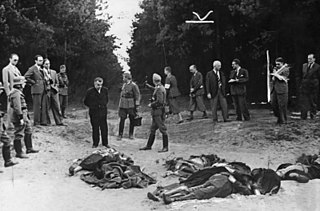
Bloody Sunday was a sequence of violent events that took place in Bydgoszcz, a Polish city with a sizable German minority, between 3 and 4 September 1939, during the German invasion of Poland.

The Battle of Lwów was a World War II battle for the control over the Polish city of Lwów between the Polish Army and the invading Wehrmacht and the Red Army. The city was seen as the key to the so-called Romanian Bridgehead and was defended at all cost.
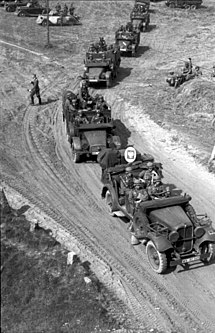
The 3rd Light Division was raised in November 1938. In 1939 it fought in the Invasion of Poland. On 4 September 1939, soldiers from the division entered the region of Katowice where they met resistance from the local Polish population. In retribution 80 Polish prisoners of war were gathered in Kosciuszko Square by German soldiers and executed.
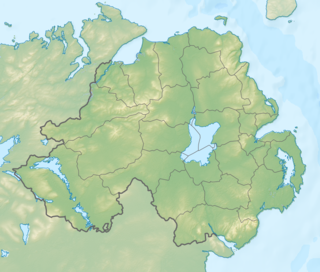
The Claudy bombing occurred on 31 July 1972, when three car bombs exploded mid-morning on the Main Street of Claudy in County Londonderry, Northern Ireland. The attack killed nine civilians, and became known as "Bloody Monday". Those who planted the bombs had attempted to send a warning before the explosions took place. The warning was delayed, however, because the telephones were out of order due to an earlier bomb attack. The Provisional Irish Republican Army (IRA) issued an immediate denial of responsibility, and later stated that "an internal court of inquiry" had found that its local unit did not carry out the attack.

Orzesze is a town in Silesia in southern Poland, near Katowice. Borders on the Upper Silesian Metropolitan Union – metropolis with the population of 2 million. Located in the Silesian Highlands.

During World War II, the Germans' combined armed forces committed systematic war crimes, including massacres, mass rape, looting, the exploitation of forced labor, the murder of three million Soviet prisoners of war, and participated in the extermination of Jews. While the Nazi Party's own SS forces of Nazi Germany was the organization most responsible for the genocidal killing of the Holocaust, the regular armed forces of the Wehrmacht committed many war crimes of their own, particularly on the Eastern Front in the war against the Soviet Union. According to a study by Alex J. Kay and David Stahel, the majority of the Wehrmacht soldiers deployed to the Soviet Union participated in war crimes.

The Przyszowice massacre was a massacre perpetrated by the Red Army against civilian inhabitants of the Polish village of Przyszowice in Upper Silesia during the period January 26 to January 28, 1945. Sources vary on the number of victims, which range from 54 to over 60 – and possibly as many as 69. The Institute of National Remembrance, a Polish organization that carried out research into these events, has declared that the Przyszowice massacre was a crime against humanity.
The Defence of Przemyśl took place between 11 and 14 September 1939, during the German Invasion of Poland. The Polish Army garrison of the former Austrian fortress of Przemyśl managed to halt the advance of the Wehrmacht for three days. The city surrendered on 14 September.

Battle of Grudziądz was a military engagement between German and Polish forces during the early days of the Invasion of Poland in September 1939. It started on 1 September and ended with a German victory on 4 September. German historiography has dealt with the fighting in the larger context of the Battle of Tuchola Forest.

Following the German invasion of Poland in 1939, some Polish citizens of diverse ethnicities served in the Wehrmacht, in particular citizens from parts of Poland annexed by Germany such as Upper Silesia and Pomerania. Service in the German military was universal in nature in these areas, however, assessing the number of ethnic Poles involved is difficult due to the fluidity of national identity. At the low end, Polish estimates often place the number of native Poles at 250,000. Ryszard Kaczmarek's conservative estimate, based on documentary evidence, is 295,000; however, Kaczmarek considers this very low and is inclined to accept numbers of up to 500,000.
The Battle of Mikołów refers to the border engagement on September 1 and 2, 1939, that took place in the area of the town of Mikołów, which is located in the Polish part of Upper Silesia, during the early stages of the Invasion of Poland in the Second World War.

The Ciepielów massacre that took place on 8 September 1939 was one of the largest and best documented war crimes of the Wehrmacht during its invasion of Poland. On that day, the forest near Ciepielów was the site of a mass murder of Polish prisoners of war from the Polish Upper Silesian 74th Infantry Regiment. The massacre was carried out by soldiers from the German Wehrmacht 15th Motorized Infantry Regiment, 29th Motorized Infantry Division, under the command of Colonel Walter Wessel.

The 18th "Żelazna" Mechanised Division is a division of the Polish Armed Forces. The division was originally part of Polish Army during the interbellum period, which took part in the Polish September Campaign. Stationed in Łomża and commanded in 1939 by Colonel Stefan Kossecki, it was part of the Narew Independent Operational Group.

Bloody Monday is a Japanese manga series written by Ryumon Ryo and illustrated by Megumi Koji. The series had been serialized in Weekly Shōnen Magazine by Kodansha from March 2007 to April 2009, with individual chapters collected into eleven tankōbon volume as of May 15, 2009, and a total of 96 chapters altogether. The manga has also been adapted into a drama series, which aired on October 11, 2008, starring Haruma Miura. The second season of the manga began in Weekly Shōnen Magazine number 46 released on October 14, 2009, and the second season of the drama adaption began airing on January 23, 2010. Kodansha's USA division released the first volume in June 2011.
The Hilo massacre, also known as Bloody Monday, was an incident that occurred on 1 August 1938, in Hilo, Hawaii, when over 70 police officers attempted to disband 200 unarmed protesters during a strike, injuring 50 of the demonstrators. In their attempts to disband the crowd, officers tear gassed, hosed and finally fired their riot guns, leading to 50 injuries, but no deaths.

The Częstochowa massacre, also known as the Bloody Monday, was committed by the German Wehrmacht forces beginning on the 4th day of World War II in the Polish city of Częstochowa, between 4 and 6 September 1939. The shootings, beatings and plunder, continued for three days in more than a dozen separate locations around the city. Approximately 1,140 Polish civilians, were murdered.
Bloody Monday is a name used to describe a series of arrests and attacks that took place during a civil rights protest held on June 10, 1963 in Danville, Virginia. It was held to protest segregation laws and racial inequality and was one of several protests held during the month of June. It attracted veteran protesters from out of town, such as Ivanhoe Donaldson, Avon Rollins, Robert Zellner and Dorthy Miller (Zellner) of the Student Nonviolent Coordinating Committee. The events received widespread criticism from national media, especially for the subsequent trials overseen by Judge Archibald M. Aiken.
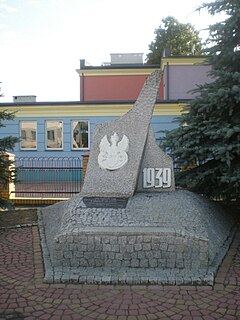
The Zambrów massacre was a war crime that took place on the night of 13–14 September 1939. It was one of the major war crimes of the Wehrmacht during the invasion of Poland. During that night, the makeshift prisoner-of-war camp in Zambrów was disturbed by a number of panicked horses, and more than 200 Polish soldiers, trying to move out of their way, were gunned down by German sentries. Some witnesses later said the horses had been purposely released into the camp by the German sentries, who used the incident as a pretext to massacre the prisoners.

The Katowice massacre or the Bloody Monday in Katowice that took place on 4 September 1939 was one of the largest war crimes of the Wehrmacht during its invasion of Poland. On that day German Wehrmacht soldiers aided by the Freikorps militia executed about 80 of the Polish defenders of the city. Those defenders were self-defense militia volunteers, including former Silesian Insurgents, Polish Boy and Girl Scouts, and possibly a number of Polish soldier stragglers from retreating Polish regular forces who joined the militia.
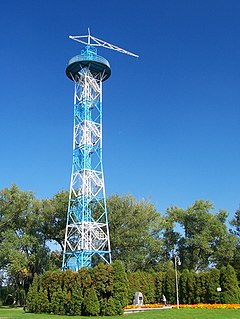
The Defense of Katowice was carried out by small groups of irregular Polish militia on 3–4 September 1939 during the German invasion of Poland. German troops secured the city by the end of 4 September.